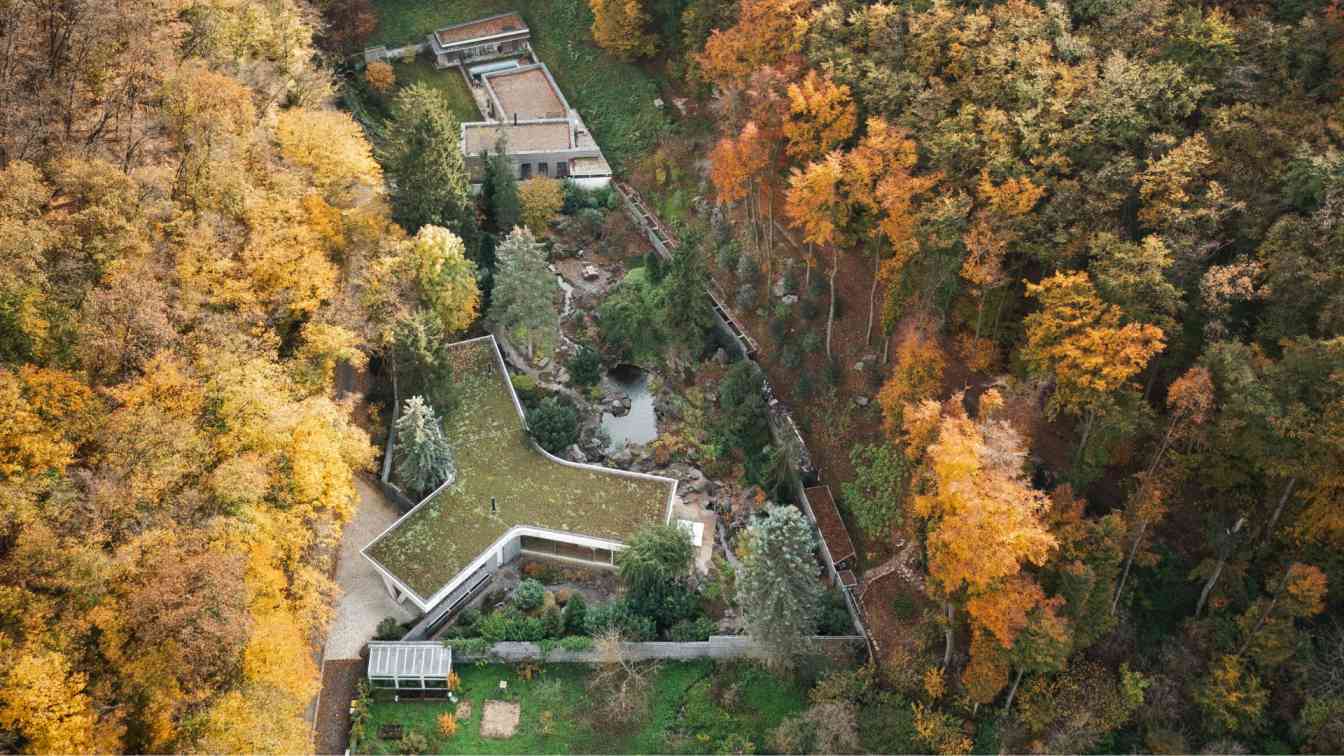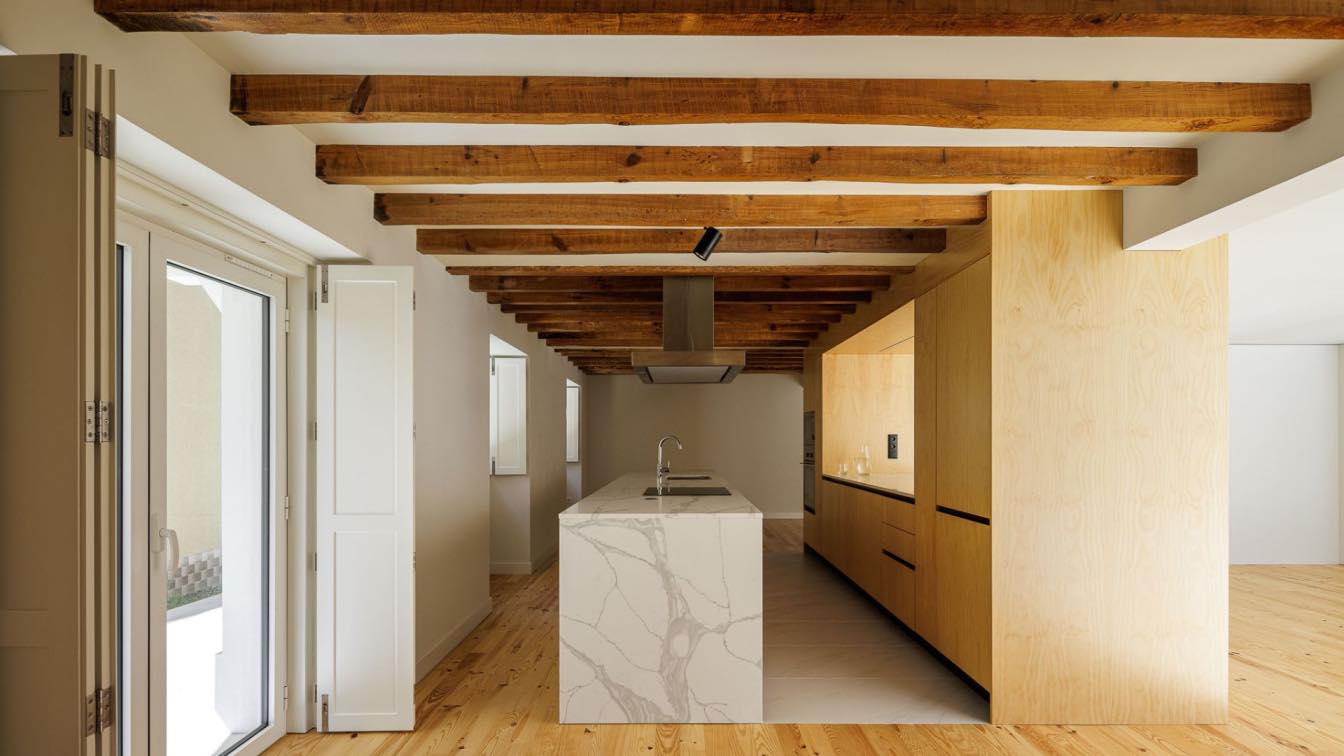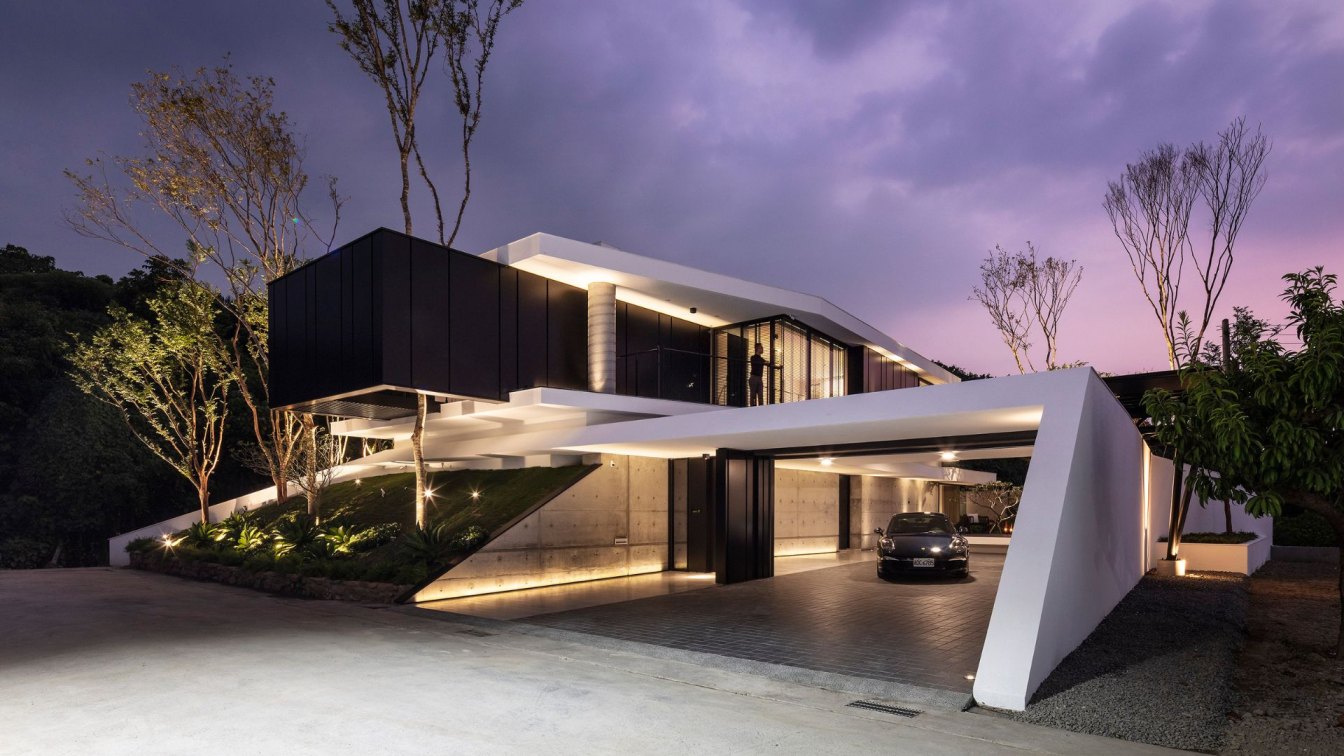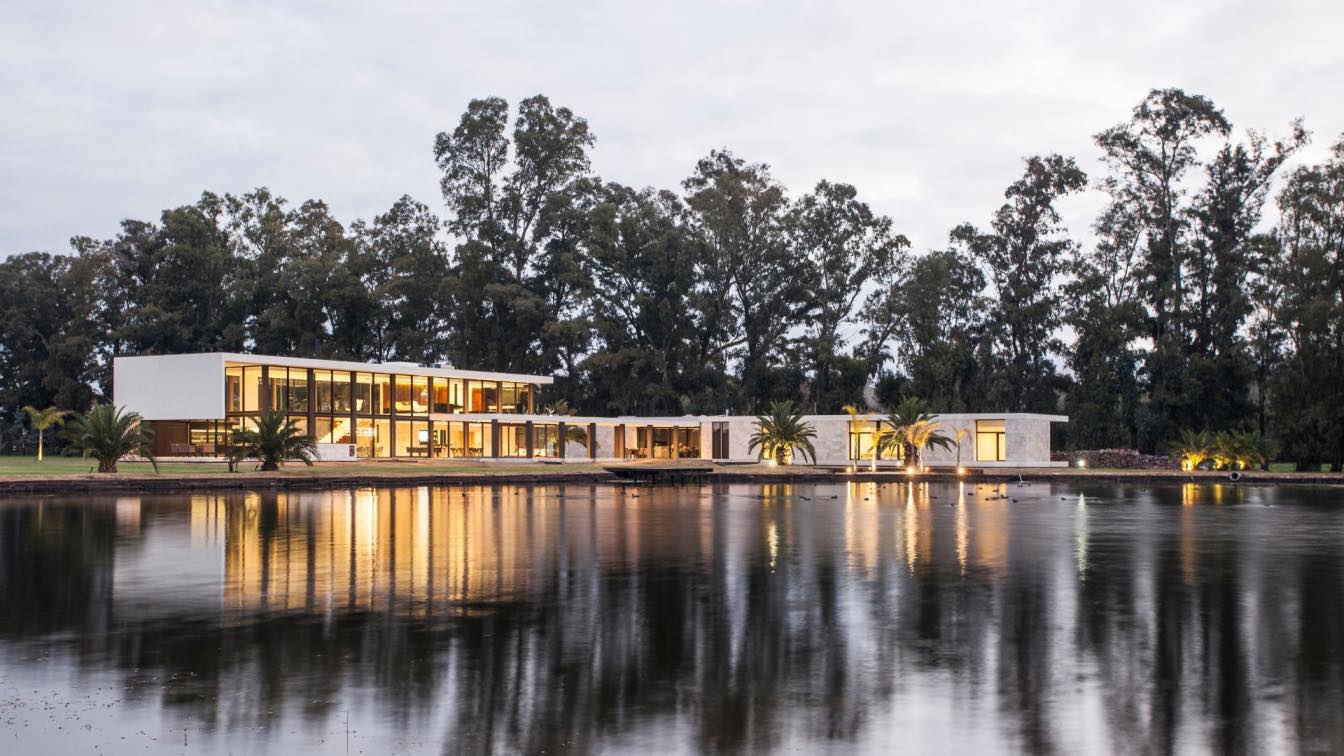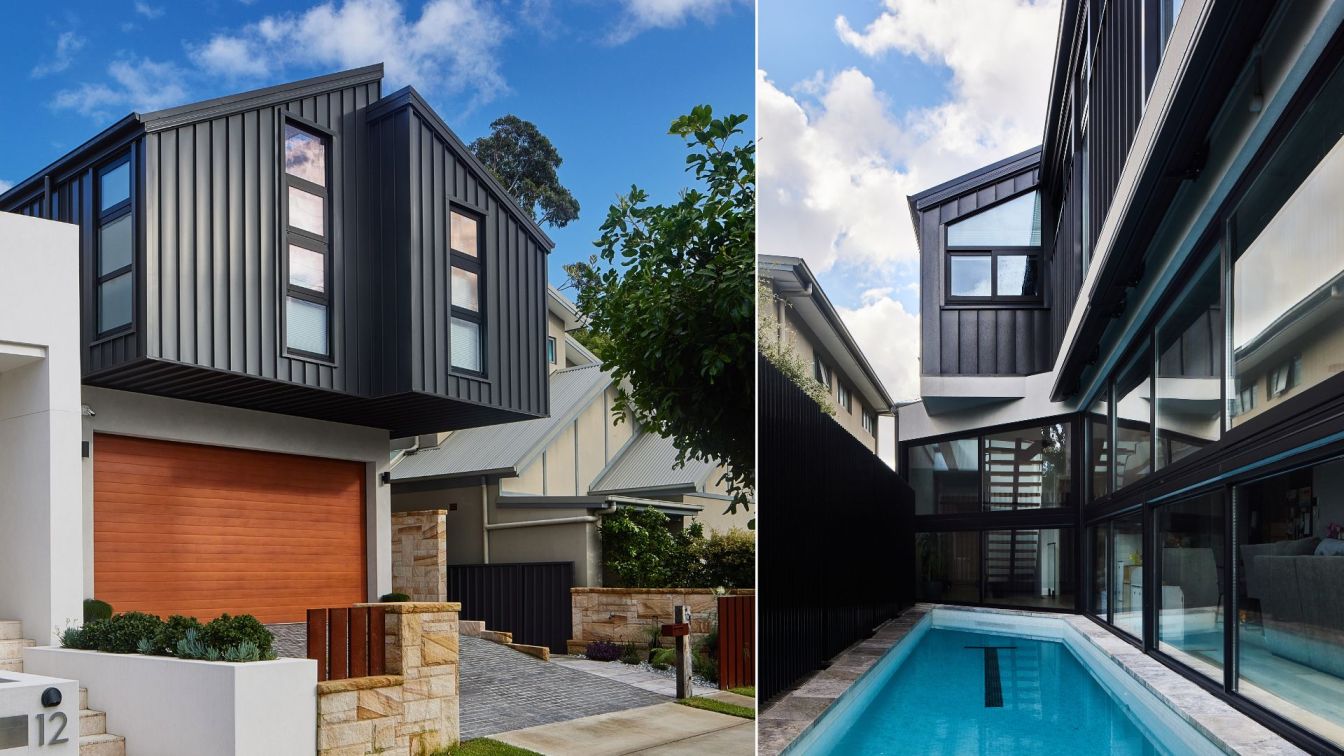The Banánka family house responds to its natural surroundings through a raw and honest use of natural materials, a restrained horizontal form, and the clarity of minimalist design. Living here is defined by a seamless connection between the interior and the outdoors, primarily achieved through large glazed walls that stretch along significant portions of the house. This allows the melancholic atmosphere of the rock garden, flowing stream, pond, and tall surrounding trees to flow right into the interior.
Paulíny Hovorka Architects: The Banánka family house responds to its natural surroundings through a raw and honest use of natural materials, a restrained horizontal form, and the clarity of minimalist design. Living here is defined by a seamless connection between the interior and the outdoors, primarily achieved through large glazed walls that stretch along significant portions of the house. This connection can be fully opened by sliding the glass façade between the central living hall, the terrace, and the garden area with a pond—something that’s not just a design gesture, but frequently used throughout the extended summer season. This allows the melancholic atmosphere of the rock garden, flowing stream, pond, and tall surrounding trees to flow right into the interior.
The property is located on the outskirts of the village of Banka, in a peaceful, intimate setting at the end of a lush valley. The name “Banánka” refers to a female resident of Banka (with “Banánec” as the male equivalent). The area's relaxed, natural atmosphere stems from its established garden character and the loose, organic pattern of surrounding homes and cottages. The house is accessed via a narrow asphalt road that transitions into a forest path leading further into the valleys of the Považský Inovec mountains. A stream runs along the edge of the property, adjacent to a dense deciduous forest that borders the site both from the access road and from the rear, creating a natural privacy screen and a green backdrop. The valley is relatively narrow along the longer sides of the plot, with the forest rising steeply into the hills beyond. On the shorter sides, neighboring houses are present but obscured from view by thick garden vegetation.
The former garden plot offers a rare advantage—deep privacy amidst mature trees and well-established greenery. The brief was to design a single-storey home with a carport, fully connected to the garden. The atmosphere was to be centered on relaxation and contemplation, with a clear separation between the private areas for parents and children. The house also had to be positioned to maximize sunlight in living spaces and preserve every existing tree. The material palette emphasizes natural elements—concrete, stone, wood, and glass—prioritizing durability, longevity, and timelessness. The result is a tranquil retreat immersed in greenery, which embodies the vision behind Banánka.

The design solution takes the form of a Y-shaped floor plan, with three wings extending outward at 120-degree angles, carefully positioned to avoid existing trees and divide the plot into smaller garden segments. Each room enjoys its own unique view into a private corner of the garden. The structure is solid and expressive, with brushed board-formed monolithic concrete ceilings, concrete interior walls, and prefabricated parapet panels. The material concept is enhanced by crushed stone encased in galvanized mesh gabions, which flow from the exterior into the interior. These are complemented by wooden cladding, floors, and decking. Windows feature ultra-slim frames and can be fully retracted into wall pockets to maximize the visual and spatial connection with the outdoors. Hidden doors are integrated into cladding and plastered surfaces. The interior, largely free of decorative objects, is defined by custom-built furniture, beds, and a modular sofa that can be reconfigured as needed.
The internal layout follows the three-winged shape of the house, all organized around a central living hall. This setup provides privacy for the main bedroom suite with a wellness area, separated from the children’s and guest rooms. The smallest, north-facing wing houses the entrance, storage, and utility rooms, with an extended roof forming both a carport and a covered entryway. The southeast wing contains three smaller bedrooms, a shared bathroom, and a multipurpose room used as a study and meditation space. The southwest wing is dedicated to the master suite, featuring a bedroom with a walk-in wardrobe, a spacious bathroom, WC, and a sauna. The wellness area connects to a smaller terrace with a hot tub and a cooling plunge pool adjacent to the stream.
At the heart of the home lies the central living hall, combining kitchen, dining, and living areas and serving as a hub connecting both residential wings. One side houses the kitchen, the other the living room, with the dining area in the center. A glass-enclosed wine room, cooled and designed for presentation, forms part of the living area. A fireplace with a massive stone heat-retaining wall anchors the space. Large sliding glass walls allow the hall to fully open onto the covered terrace, merging inside and outside into one. The terrace includes a summer kitchen with a grill and an outdoor dining area oriented toward the garden, pond, and forest beyond.


















































About studio / author
The architectural studio Paulíny Hovorka Architects focuses on the design and project management of new constructions and reconstructions of residential and commercial buildings, covering a wide range from relate to local urban context to interior details.The scope of services ranges from architectural studies through all project stages to active author collaboration in construction.
The studio was founded by architects Martin Paulíny (FA STU Bratislava, Slovakia, 1997; authorized architect, member of the Slovak Chamber of Architects, reg. No. 1231AA) and Braňo Hovorka (FA STU Bratislava, Slovakia, 1998) in Banská Bystrica, Slovakia in 1998. Over time, other architects have become part of the studio: Natália Galko Michalová, Marek Peťovský, Veronika Kochaníková, Radovan Krajňak, Jakub Havlík, Zuzana Hrušková Reháková.
In design, we strive for an appropriate but original and innovative response to the starting points of an assignment. These are the client's requirements, the characteristics of his land and location, as well as the affordability of construction and long-term sustainable operation. These starting points are logically reflected in the thoughtful concept of the building, which is helped by its clean modern design. A precisely designed building and interior details are the final pieces of the puzzle leading to extraordinary and exceptional results.
Our typical assignment when designing a building is to combine functional parameters with aesthetic ones and should be good architecture. It should therefore have a certain added value, something extra. We search for this extra in a consistent and thoughtful connection of the building's concept and design and how it fits in with its surroundings and relevant context. Each construction site has its advantages and disadvantages, which can be taken into account in relation to the starting requirements of future users. The advantages of the location must be fully utilized in the design, disadvantages minimized, and any formalism avoided, while appropriately using contemporary technological advancements.
The results of this approach in architectural design can be judged by examples of our designed and implemented buildings, many of which have received prestigious architectural awards.

